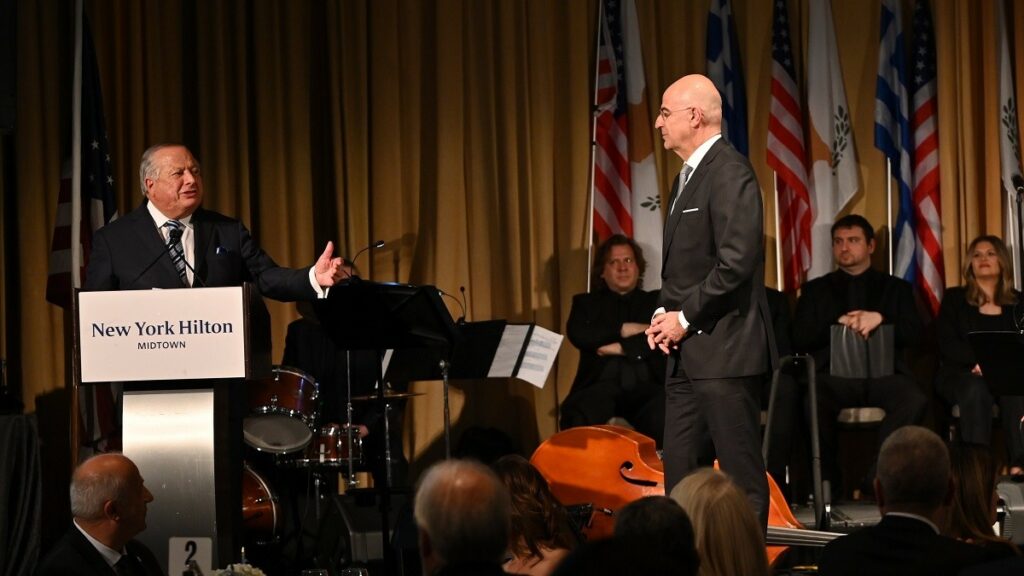
(POMEPS Briefing) Syria’s ongoing existential conflict is arguably related to its nation-building trajectory starting in the beginning of the twentieth century. What can theories of nation-building and state formation tell us about the origins of conflict as well as future of the Syrian state?
In The Politics of Nation-Building,[1] I identify the conditions under which the ruling political elites of a state target ethnic groups with assimilationist policies instead of granting them minority rights or excluding them from the state. I develop a theory that focuses on geostrategic considerations arguing that a state’s nation-building policies toward non-core groups — any aggregation of individuals perceived as an unassimilated ethnic group by the ruling elite of a state — are influenced by both its foreign policy goals and its relations with the external patrons of these groups. I posit that external involvement, whether clandestine, covert, or overt, drives not only the mobilization and politicization of the non-core group’ s identity, but also the host state’ s perception of the non-core group and the state’ s nation-building policies toward the group.
Harris Mylonas
Through a detailed study of the interwar Balkans, I conclude that the way a nation-state treats a non-core group within its own borders is determined largely by whether the state’s foreign policy is revisionist or cleaves to the international status quo, and whether it is allied or in rivalry with that group’s external patrons. However, as I admit in the book, my argument does not travel to all states at all times. In particular, it should apply to countries that 1) are driven from a homogenizing imperative, 2) have non-assimilated segments of the population and no caste system in place, 3) have the capacity to directly rule the population, and 4) have a ruling political elite representing a core group with a clear “national type”. In what follows, I explore how my work illuminates some of the challenges of nation-building in the Syrian case.
Arguably, the Syrian government has not been motivated by a homogenizing imperative. This begs the question, why some places in the world are run by core groups consisting of apparent minimum winning coalitions,[2] while others by elites that go at great lengths to establish national states. [3] Why do some countries have leaders that try to make the national and the political unit overlap and others that opt to rule with a minimum winning coalition? One argument suggests that the degree of diversity prevents the nation-building path in some cases. Other arguments focus on the pattern of spread of nationalist ideology and/or the prevalence of competing ideologies such as communism, or colonial legacies. Yet others put forth the importance of war-making and imitation of successful military tactics as a mechanism that accounts for the spread of nationalism and the nation-state system.[4]
In The Politics of Nation-Building I build on some of these explanations and suggest that the main reason that leaders adopt the “nation-building option” is the reality, or anticipation, of other powers manipulating non-core groups in their state to undermine their stability or annex parts of their territory. This process is particularly conspicuous in situations where the ruling elites perceive their borders to be challenged. While this process worked in Tilly’s account of Europe[5] and fits the pattern I narrate in the interwar Balkans, it does not seem to fit so much the story in Syria. Following the collapse of the Ottoman Empire, and after a brief interlude of direct rule by Ibrahim in the mid-19th century, the territories of contemporary Syria were divided up by decree through a series of treaties. Syria was under the French Mandate since 1920 and after a tumultuous history gained independence in 1946. As it is often the case, colonial powers had to rely on local elites coming from specific groups for political and economic control. Syria was no exception and the role of the Alawis and Christian minorities was vital for the French from the beginning of their Mandate. As Wendt and Barnett put it,
“Lacking political legitimacy, the colonial state’s power was always underwritten by the actual or threatened use of force. Significant military resources were typically not available from the centre, however, and since mass mobilization was not viable for an army of occupation, colonial states tended to militarize coopted groups or ethnic minorities. A similar process occurred in colonial bureaucracies, which were staffed by persons with a vested interest in upholding the authority of an alien state. The character of colonial military and bureaucratic development, in other words, was shaped by the security needs of foreign actors and their domestic clients rather than of the mass population.” [6]
As a result of this legacy, as well as the geopolitical situation in the region, this system of choosing a loyal local ethnic group and ruling the rest of the population through it–that has its roots to the French colonial period–was perpetuated. The various military coups following independence until Hafez al-Assad consolidated his rule on the country in 1970 solidified this outcome. The legitimating principle of the Assad regime has not been state-level nationalism. In fact, repression and a carefully constructed network of informants were the basis for legitimacy in Syria for the past four decades—if not longer. To complement this apparatus Lisa Wedeen revealed a cult that the Assad regime—father and son—designed which operated as a disciplinary device. [7] For decades citizens acted as if they revered their leader. “The cult works to enforce obedience, induce complicity, isolate Syrians from one another, and set guidelines for public speech and behavior” as Wedeen put it in 1999.[8]
Another set of conditions for my argument to be applicable is that part of the population has not yet been successfully assimilated and there is no “caste structure” in place since in caste systems assimilation is by definition impossible.[9] Syria is definitely a heterogenous society, but the heterogeneity is more pronounced depending on which cleavage dimension is salient at each historical moment. In terms of ethnicity, about 90% of the population was Arab before the civil war—including about 500,000 Palestinians and up to 1.3 million Iraqi refugees—while there were about 9% Kurds and smaller groups of Armenians, Circassians, and Turkomans. In terms of religion, based on 2005 estimates 74% of the population were Sunni Muslims, Alawis were about 12%, Druze 3%, while there are also some small numbers of other Muslim sects, Christians 10%, about 200 Jews, and Yazidis.[10] Finally, in terms of mother tongue we find the vast majority speaking Arabic, and then Kurdish, Armenian, Aramaic, and Circassian being used by the respective non-core groups. Moreover, although this was not a caste system the mode of rule was definitely blocking social mobility and especially political clout for non-Alawis and their close allies and informants. The rule of the Alawi controlled Baath party coupled with the state of emergency that had been in force since 1963 had decisively alienated the Arab Sunni majority. But following the Arab Spring and coupled with past violence, inequalities, and repression that many reportedly felt in Syria, resistance against the regime grew and by now it has turned into a multiparty civil war. The opposition is fragmented but defections from the Assad side have also been plentiful. The lack of any national cohesion is apparent.
Nation-building cannot be pursued by a failed state that cannot directly rule its population. Assad’s regime clearly did not suffer from this problem. Syria was far from a failed state. In fact, it is a state with high literacy rates– 88% for males and 74%for females. But even if Syrian ruling elites faced the pressures I described above and had the capacity to do so, they would have had a hard time to nation-build. For nation-building to occur, the ruling political elites of the state must represent a core group that is well defined and has a clear criterion of inclusion—a “ national type” in what Eric Hobsbawm called the age of nationalism. In Syria, the closest thing we can find to a constitutive story in Assad’s Syria has to do with a Pan-Arab identity. Particularly, a version of baathist ideology that combines a supranational form of nationalism that calls for the unity of Arabs with anti-imperialism, anti-Zionism and secular socialism.[11] Arab nationalism, a form of unification nationalism,[12] was vital in the struggle for independence—a by-product of British machinations against the Ottoman Empire—as well as the decolonization movement against the French. Thus, the state-level type of nationalism that dominated Europe, did not manage to emerge in much of the Arab Middle East, since such a unification was opposed by multiple great and regional powers. The short experiment of the United Arab Republic that brought Egypt and Syria together in a union between 1958 and 1961 was stillborn but characteristic of the supranational character of the constitutive story that motivated Syrian leadership. Given this configuration, it is really hard to identify a Syrian constitutive story and this is reflected in the school curriculum that primarily emphasizes anti-Zionist ideas, Pan-Arab ideas, and ironically, Sunni Islam.[13] Thus, while linguistically and ethnically there could be an overwhelming majority constructed–that of Arabs and Arabic–if one had to decide what constitutes the core group in Assad’s Syria, they would most likely suggest that it is the Alawis – together with other minorities – in the exclusion of the Sunni Arab majority.
Despite the well-known arguments that territory is becoming increasingly less important in our globalized world, myriad of territorial disputes, dozens of border changes and the long list of “nations without a state,” or “stateless nations,” point to a more sobering picture. For the past couple of years, several external state and non-state actors are aligning themselves with internal factions or non-core groups in Syria. However, the most powerful regional states Turkey, Iran, and Israel – all non-Arab– are unable to dominate Syria through these local alliances. The USA can be an arbiter of the conflict by intervening with Sunni, which would please Turkey and the Gulf states along with Sunni populations in Syria, Jordan, Palestine, and Egypt—each for different reasons. Alternatively, if Iran prevails, Alawis in Syria, Hezbollah in Lebanon, Shia minorities in the Gulf States, and the Shia majority of Iraq would rejoice. But a more cynical point of view, one perhaps best summarized by Ed Luttwak,[14] suggests that the USA—and even Israel —should allow this war to go on since it is in their strategic benefit for the factions to fight each other thus preventing the emergence of a strong and unified Arab state, or a victorious Iran. A note of caution flows from my work in the Balkans. Shifting alliances in the context of the current multiparty civil war with ample external backing, coupled with the rapid changes in control over territory already have lead and will continue to lead to repeated instances of violent exclusionary policies, since non-core groups that are perceived as enemy-backed, or collaborating with the enemy, are going to be targeted by the respective sides of the conflict.
See: The Political Science of Syria’s War, POMEPS Briefing #22, December 18, 2013.
[1] Mylonas, Harris. 2012. The Politics of Nation-Building: Making Co-Nationals, Refugees, and Minorities. New York, NY: Cambridge University Press.
[2] Riker, William H. 1962. The Theory of Political Coalitions. New Haven: Yale University Press; Bruce Bueno de Mesquita, James D. Morrow, Randolph M. Siverson and Alastair Smith. 2002. “Political Institutions, Policy Choice and the Survival of Leaders,” British Journal of Political Science, Vol. 32, No. 4 (Oct.,), pp. 559-590; Bueno de Mesquita, Bruce; Alastair Smith; Randolph M. Siverson and James D. Morrow. 2003. The Logic of Political Survival. MIT Press.
[3] Weber, Eugen. 1976. Peasants into Frenchmen: The Modernization of Rural France, 1870-1914. Stanford: Stanford University Press; Gellner, Ernest. 1983. Nations and Nationalism. Ithaca, NY: Cornell University Press; Smith, Anthony. 1986. “State-Making and Nation-Building,” in John Hall (ed.), States in History. Oxford: Basil Blackwell, 228–263; Smith, Rogers. 2003. Stories of Peoplehood: The Politics and Morals of Political Memberships. Cambridge University Press; Darden, Keith and Anna Maria Grzymała-Busse. 2006. “The Great Divide: Literacy, Nationalism, and the Communist Collapse,” World Politics – Volume 59, Number 1: 83-115.
[4] Connor, Walker. 1984. The National Question in Marxist-Leninist Theory and Strategy. Princeton, New Jersey: Princeton University Press; Posen, Barry. 1993. “Nationalism, the Mass Army and Military Power,” International Security, 18, 2: 80-124; Wimmer, Andreas. 2013. Waves of War: Nationalism, State Formation and Ethnic Exclusion in the Modern World. New York: Cambridge University Press, 2013.
[5] Tilly, Charles (ed.). 1975. The Formation of National States in Western Europe. Princeton, N.J.: Princeton University Press; Tilly, Charles. 1990. Coercion, Capital and European States: AD 990-1990. Cambridge, MA: Basil Blackwell. Tilly, Charles and Wim P. Blockmans (eds.). 1994. Cities and the Rise of States in Europe, AD 1000 to 1800. Boulder: Westview Press.
[6] Wendt, Alexander and Michael Barnett. 1993. “Dependent State Formation and Third World Militarization”, Review of International Studies 19: 321-47, p. 331.
[7] Whitman, Elizabeth. “Stalemate in Syria,” The Nation, April 23, 2012.
[8] Wedeen, Lisa. 1999. Ambiguities of Domination: Politics, Rhetoric, and Symbols in Contemporary Syria. Chicago, IL: University of Chicago Press.
[9] They involve an “ideology of inferiority for the subordinate groups” and thus an almost fixed ethnic structure that is perceived as natural. For more on hierarchical systems, see Horowitz, Donald. 1985. Ethnic Groups in Conflict. University of California Press, pp. 21–32.
[11] It is characteristic that both in 1982 when the regime violently crushed the Muslim Brotherhood rebellion in Hama and in mid-March 2011 following the brutal response of the regime to the protests in Daraa, the conflict was attributed to Zionists and Americans intervening in Syrian internal affairs using fifth columns as agents of Western imperialism. See Wedeen 1999 and Seale, Patrick. “The Syrian Time Bomb Forget Libya”, Foreign Policy, March 28, 2011.
[12] Hechter, Michael. 2000. Containing Nationalism. Oxford University Press.
[13] Landis, Joshua M. 2003. “Islamic Education in Syria: Undoing Secularism,” presented at the conference on Constructs of Inclusion and Exclusion: Religion and Identity Formation in Middle Eastern School Curricula, Watson Institute for International Studies, Brown University.
[14] Luttwak, Edward. “In Syria, America Loses if Either Side Wins,” The New York Times, August 24, 2013


